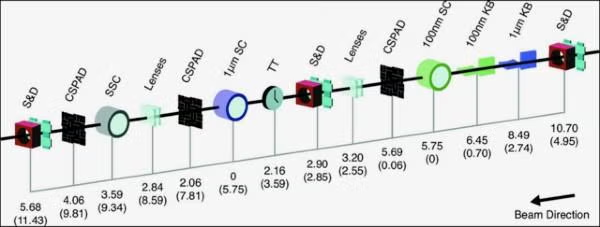CXI Schematic

CXI Beamline Sections
Acronym | Full Name | Devices | Purpose |
|---|---|---|---|
XRT:DIA | DIAgnostics stand in the X-ray Tunnel |
|
|
DG1 | DiaGnostics stand 1 |
|
|
KB1 | 1 micron KB mirrors |
|
|
KB01 or KB2 | 0.1 micron KB mirrors |
|
|
SC01 or SC2 | 0.1 micron Sample Chamber |
|
|
DSA | Detector Stage (A location) |
|
|
DG2 | DiaGnostics stand 2 |
|
OR
|
DSB | Detector Stage (B location) |
OR
|
OR
|
SC1 | 1 micro Sample Chamber |
|
|
DSC | Detector Stage (C location) |
Coming Soon
|
Coming Soon
|
SSC or SC3 | Serial Sample Chamber |
|
|
DSD | Detector Stage (D location) |
OR
|
OR
|
DG3 | DiaGnostics stand 3 |
|
|
DG4 | DiaGnostics stand 4 |
|
|
